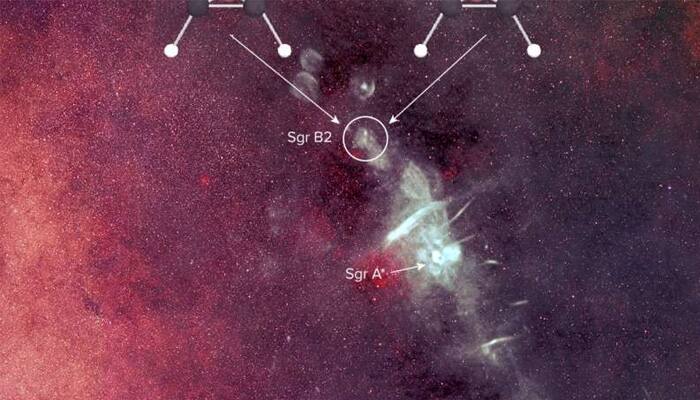Canberra/Washington: For the first time, life's first handshake was detected near our galaxy in space.
A team of scientists using highly sensitive radio telescopes has discovered the first complex organic “chiral” molecule in interstellar space near the centre of our galaxy.
Certain organic molecules like a pair of human hand have mirror-image versions of themselves, a chemical property known as chirality.
The so-called "handed" molecules are essential for biology and have intriguingly been found in meteorites that have hit the Earth and comets in our solar system.
The molecule, propylene oxide (CH3CHOCH2), was found in an enormous star-forming cloud of dust and gas known as Sagittarius B2 (Sgr B2).
“This is the first molecule detected in interstellar space that has the property of chirality, making it a pioneering leap forward in our understanding of how prebiotic molecules are made in the universe and the effects they may have on the origins of life," explained Brett McGuire, Jansky post-doctoral Fellow with the National Radio Astronomy Observatory (NRAO) in Charlottesville, Virginia.
"Propylene oxide is among the most complex and structurally intricate molecules detected so far in space," added Brandon Carroll, chemistry graduate student at the California Institute of Technology.
Detecting this molecule opens the door for further experiments determining how and where molecular handedness emerges and why one form may be slightly more abundant than the other.
Complex organic molecules form in interstellar clouds like Sgr B2 in several ways.
The most basic pathway is through gas-phase chemistry, in which particles collide and merge to produce ever more complex molecules.
To form more complex molecules like propylene oxide, astronomers believe thin mantles of ice on dust grains help link small molecules into longer and larger structures.
These molecules can then evaporate from the surface of the grains and further react in the gas of the surrounding cloud.
To date, more than 180 smaller molecules have been detected in space.
“Meteorites in our solar system contain chiral molecules that predate the Earth itself, and chiral molecules have recently been discovered in comets," noted Carroll. "Such small bodies may be what pushed life to the handedness we see today."
"By discovering a chiral molecule in space, we finally have a way to study where and how these molecules form before they find their way into meteorites and comets, and to understand the role they play in the origins of homochirality and life," McGuire said in a paper published in the journal Science.
The research was undertaken with the National Science Foundation's Green Bank Telescope (GBT) in West Virginia as part of the Prebiotic Interstellar Molecular Survey. Additional supporting observations were taken with the Parkes radio telescope in Australia.
(With IANS inputs)
















